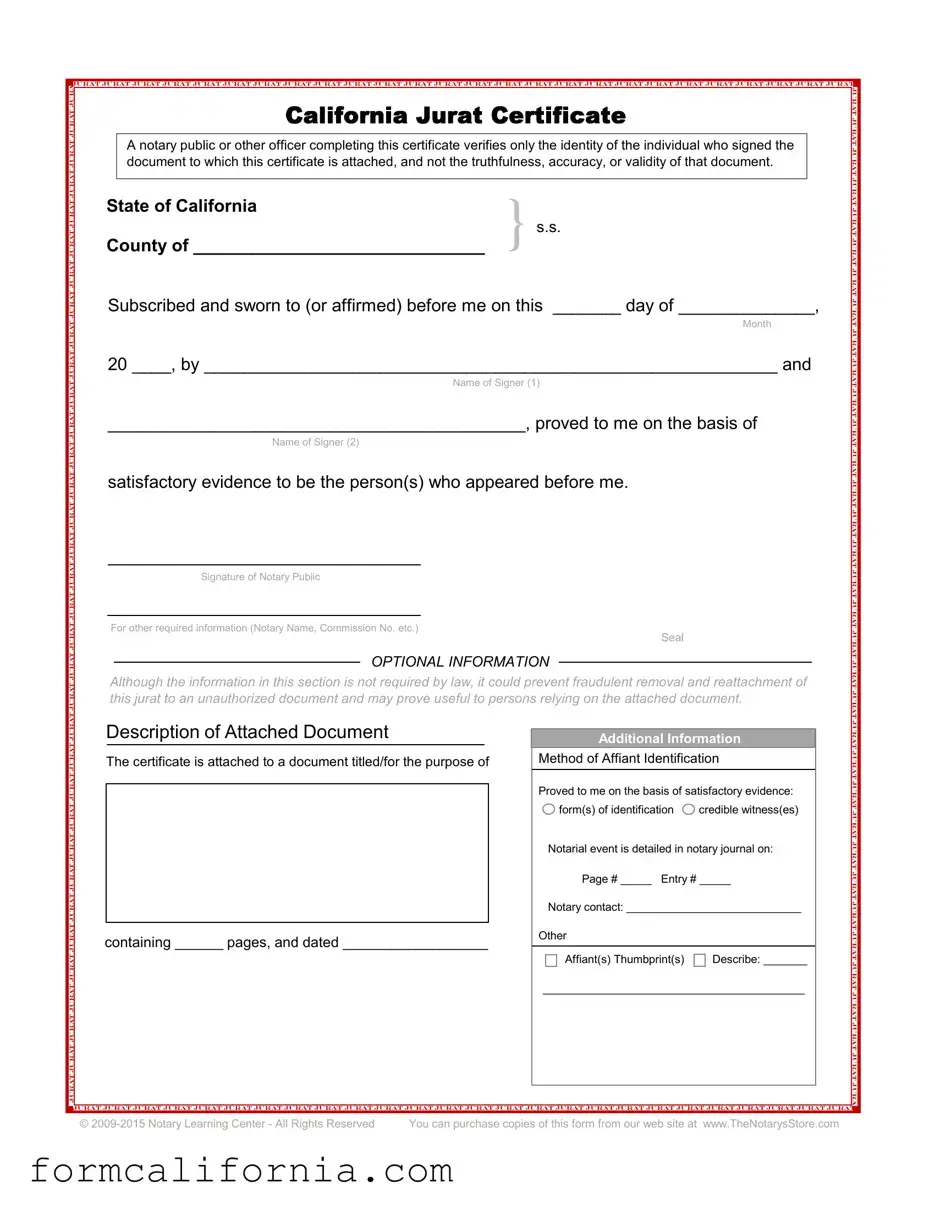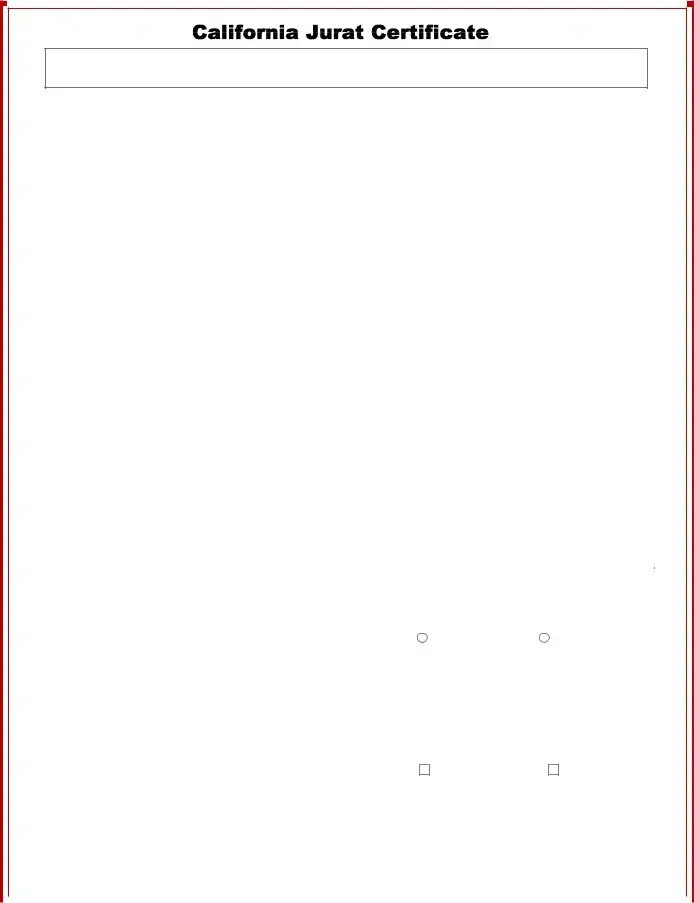Blank California Jurat PDF Form
The California Jurat form is a legal document used to certify that an individual has sworn to or affirmed the truthfulness of the contents of a document before a notary public. This certification is necessary for various legal and official documents to ensure their validity and integrity. The jurat form is distinguished by its requirement that the signer must personally appear before the notary, swear to or affirm the content, and sign in the notary's presence.
Fill Out This California Jurat

